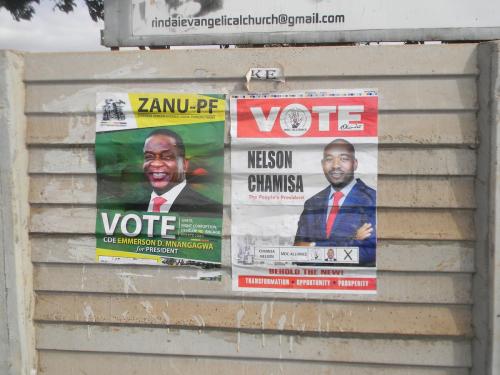Content from the Brookings Institution India Center is now archived. After seven years of an impactful partnership, as of September 11, 2020, Brookings India is now the Centre for Social and Economic Progress, an independent public policy institution based in India.
This column first appeared in Business Standard, on January 25, 2015. Like other products of the Brookings Institution India Center, this is intended to contribute to discussion and stimulate debate on important issues. The views are those of the author.
During the five-year period 2003-08, even as the world economy was barrelling along, three countries accounted for about half of the cumulative increase in global economic growth. These were, as one might have guessed, China, the United States and India. Over the next few years, the world economy is virtually certain not to repeat its performance of that period. It is also quite clear, based on current and projected patterns, that these three economies will have as significant, if not larger, share of the global increase in gross domestic product (GDP) during this period. In this scenario, each of these countries should, logically, be searching for every opportunity to expand economic linkages with each other. Growth, trade and investment are mutually reinforcing in a virtuous circle.
The skewed pattern of global growth and its implications for bilateral relationships provides a useful context in which to understand the greater emphasis that all three countries appear to be putting on bilateral relationships within the triangle. Of course, security considerations will always be a critical component of each relationship, but even as these ebb and flow, the economic dimensions of the relationships are clearly becoming more central.
This is clearly reflected in the short interval between summit meetings between Prime Minister Narendra Modi and United States President Barack Obama and the high visibility of economic issues on the agenda for the meetings currently under way. United States Secretary of State John Kerry’s aspiration that Indo-US trade relations expand fivefold over the next five years indicates the importance that is being placed on this aspect of the relationship.
Several of my colleagues collaborated on a collection of articles highlighting the issues on which progress was being made in the Indo-US relationship and suggesting ways of reinforcing the momentum.* Among the economic issues discussed were macro-considerations like a bilateral investment treaty and intellectual property rights (IPR) regimes, and sectoral issues in energy, education, defence and urban development.
While a bilateral investment treaty is certainly not a guarantee that investment flows will increase, it does provide a basis for greater comfort among investors. By assuring them of national treatment with respect to many regulatory and fiscal mechanisms, it takes a lot of the uncertainty of investing in another country – remember that Indian companies also have significant investments in the United States. At a broader level, it commits the signatories to a broad investor- and market-friendly policy regime, adding a greater degree of assurance, not just to investors from the two countries but globally as well.
On the IPR front, the state of the relationship before the first summit in September was fractious, with the office of the United States Trade Representative having placed India on a priority watch list and scheduled an out-of-cycle review of India’s regime. India argued that its regime was entirely compliant with global standards, which both countries had signed on to. Be that as it may, since the September summit, during which a high-level working group on the issue was set up, there are clear signs of convergence.
The Indian government set up a group to assess the regime and recommend changes. The United States conducted its out-of-cycle review, which, reportedly, has not come out with adverse findings. Given that growth in bilateral trade and investment flows will come significantly from technology-intensive sectors, these early signs of convergence are reassuring. But it will take some deft balancing to address commercial considerations with welfare objectives, for instance, in the pharmaceuticals domain.
Energy is a domain in which many opportunities exist. There is the issue of supply, with the United States likely to become an exporter when its shale reserves come on stream. The current oil price scenario may introduce some uncertainty about the short-term viability of shale oil and gas extraction, but in a medium-to-long-term scenario, the United States is going to be a net global supplier. Bilateral arrangements that lock in supply commitments are an important part of India’s energy security framework.
Beyond this, there is the issue of civil nuclear co-operation, which will add another important element to India’s energy strategy, both from security and sustainability perspectives. One critical sticking point in this regard is that of liability; operationalising nuclear co-operation will require some restructuring in the liability framework, which puts some bounds on the exposure of the equipment suppliers. There seem to be high expectations that this will be a major achievement of the summit.
From the perspective of environmental sustainability, both knowledge and resource transfers relating to conservation and alternative and renewable energy sources will be significant. A framework that facilitates this will encompass both the investment and IPR issues alluded to above and an arrangement on climate change. The recent bilateral agreement between China and the United States on climate change may be seen as something of a precedent. However, from India’s perspective, as in the IPR domain, the imperative will be to balance the needs of development and welfare with the contributions to the global efforts to mitigate and adapt to the effects of climate change.
On higher education, India is becoming a significant source of fee-paying students in United States universities. Both supply constraints in the Indian system and greater affordability are driving this, but a huge opportunity exists for both expanding domestic capacity and enhancing the overall quality of the Indian higher education system through greater flexibility for United States presence in India.
These are just a few examples of ways in which the bilateral imperative can be realised. Essentially, two fundamentals need to be recognised. One, the skew in global growth patterns, mentioned earlier, make the bilateral relationships within this group of three countries more and more significant for their individual economic objectives. Two, as far as the Indo-US relationship goes, a significant increase in its economic magnitudes will certainly not happen in a business-as-usual way. It will require transaction volumes to be built up in a number of new areas of engagement. Some of these were provided as examples above, but there are several more.
Realising the imperative will require a two-tier approach. The first tier will be the overarching enabling framework, such as a bilateral treaty. But below this, each sector of potential has special requirements, which will need to be addressed in a customised way.
Image Source: Ministry of External Affairs
The Brookings Institution is committed to quality, independence, and impact.
We are supported by a diverse array of funders. In line with our values and policies, each Brookings publication represents the sole views of its author(s).



Commentary
Op-edThe Bilateral Imperative
Business Standard
January 27, 2015